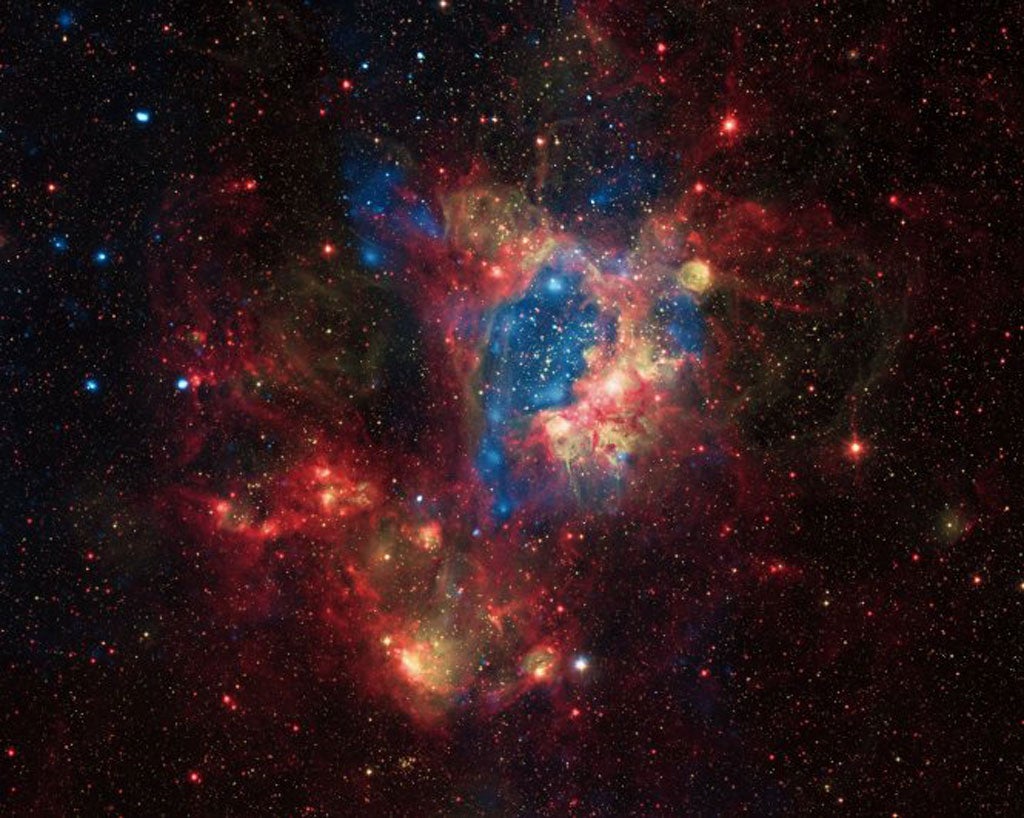The LMC is a small neighboring galaxy to the Milky Way. It contains many regions where clouds of gas and dust are forming new stars. One such region, surrounding the star cluster NGC 1929, is shown close-up in this new image from ESO’s VLT. This nebula is officially known as LHA 120-N 44 (N 44). Hot young stars in NGC 1929 are emitting intense ultraviolet light and causing the gas to glow. This effect highlights the aptly named superbubble, a vast shell of material around 325 by 250 light-years across. For comparison, the nearest star to our Sun is just over 4 light-years distant.
The N 44 superbubble has been produced by the combination of two processes. First, stellar winds — streams of charged particles from the hot and massive stars in the central cluster — cleared out the central region. Then, massive cluster stars that exploded as supernovae created shock waves and pushed the gas out farther to form the glowing bubble.
Although destructive forces shaped the superbubble, new stars are forming around the edges where the gas is being compressed. Like recycling on a cosmic scale, this next generation of stars will breathe fresh life into NGC 1929.
The LMC is a small neighboring galaxy to the Milky Way. It contains many regions where clouds of gas and dust are forming new stars. One such region, surrounding the star cluster NGC 1929, is shown close-up in this new image from ESO’s VLT. This nebula is officially known as LHA 120-N 44 (N 44). Hot young stars in NGC 1929 are emitting intense ultraviolet light and causing the gas to glow. This effect highlights the aptly named superbubble, a vast shell of material around 325 by 250 light-years across. For comparison, the nearest star to our Sun is just over 4 light-years distant.
The N 44 superbubble has been produced by the combination of two processes. First, stellar winds — streams of charged particles from the hot and massive stars in the central cluster — cleared out the central region. Then, massive cluster stars that exploded as supernovae created shock waves and pushed the gas out farther to form the glowing bubble.
Although destructive forces shaped the superbubble, new stars are forming around the edges where the gas is being compressed. Like recycling on a cosmic scale, this next generation of stars will breathe fresh life into NGC 1929.










